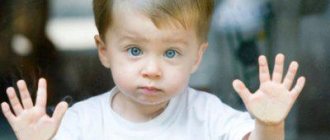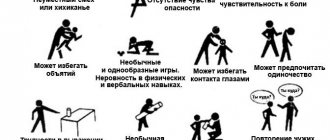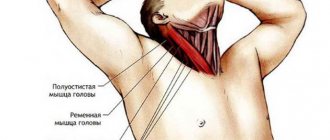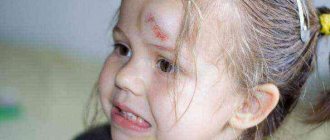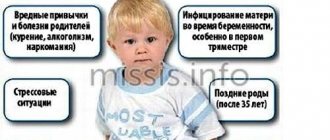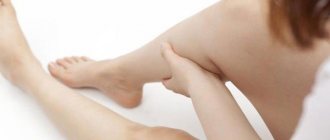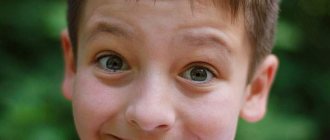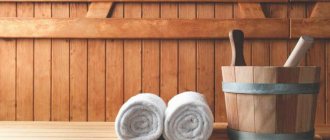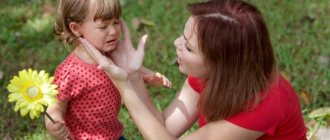04.01.18
Why do children with autism resort to stereotypic behavior (stimming) to self-soothe, and how to help them avoid harmful stereotypies
Author: Karen Wang / Karen Wang Source: Friendship Circle
Each of us has motor stereotypies. When I talk to my friend, I twirl my hair on my finger. Maybe you start biting your nails when you're nervous or bored. Maybe you have a habit of tapping your fingers or pen on the table when you are thinking. I had a friend who liked to chew cinnamon sticks, and I know someone who makes unusual eye movements.
There are people whom I recognize from afar by their characteristic movements. We all know people with annoying stereotypes, such as cracking their knuckles every 5 minutes, repeating the same phrase over and over again, or socially unacceptable stereotypes such as picking their nose or biting their hand.
Cause and Effect
An autistic child actually receives primary mental trauma through a negative impact on the dominant sound vector. Loud sounds, noisy music and even parental quarrels could have such an impact, as a result of which a child with a sound vector isolates himself from the world and ceases to perceive information from the outside.
Alas, the tragedy does not end there. In the modern world there are practically no one-vector people. And disturbances in the dominant sound vector cause an avalanche-like cascade of deviations in the development of all other vectors that are assigned to the child from birth. As a result, we are presented with a mixed picture of numerous pathological manifestations. Thus, the development of the child as a whole depends on the state of the sound vector.
In this article, from the point of view of System-Vector Psychology by Yuri Burlan, we will analyze the mechanism of how the development of the skin vector is disrupted in childhood autism, and what symptoms appear. By recognizing the systemic reasons for their child’s behavior and relying on the recommendations of this and other systemic articles, parents will be able to create the most comfortable conditions for the development of the innate abilities of an autistic child.
Diagnostics
The diagnostic program includes the following activities:
- visual examination of the child;
- clarification of the current clinical picture, collection of personal and family history;
- studying the patient's medical history.
In addition, additional laboratory and instrumental research methods may be required:
- general and biochemical blood test;
- CT, MRI of the brain;
- psychiatric tests.
Carrying out a computed tomography scan for a child.
You may need to consult a neurologist, ophthalmologist, otolaryngologist, child psychologist, or speech therapist.
About the developmental features of a healthy child with skin vector
The skin vector provides a healthy baby with amazing mobility and dexterity, and good motor skills. From birth, these babies have especially sensitive skin, receptive to the slightest touch. Physical punishment represents unbearable suffering for a skinned child; they should never be beaten.
Children with the skin vector have an engineering mindset. From early childhood, they enthusiastically build something, be it the first tower made of cubes or a complex spaceship from all the furniture that comes to hand in the house. They have excellent rational thinking, based on an innate sense of benefit and benefit. They master counting skills earlier than other children. In the future, this will help a child with the skin vector become an excellent engineer, businessman, and even a legal professional.
What happens when the skin vector develops under conditions of sound trauma, that is, in childhood autism?
Therapy
For obsessive movements in children, treatment is mainly based on various behavioral methods. Treatment with pharmacological agents (tablets) is usually not used. Clonazepam, Haloperidol, or Clonidine are sometimes used, but their effects are inconclusive.
In certain cases, hypnosis can help treat obsessive disorders. In addition to eliminating the consequences, it can identify and eliminate the causes of the violation.
It is important not to try to get rid of the disorder on your own (folk methods, “re-education”). This may cause the problem to worsen.
Distorted picture of early development in a sound-cutaneous autistic child
If we are talking about primary autism (that is, the child received sound trauma in the womb), then from infancy not only the disorders characteristic of any autistic person are visible (does not respond to the name, insufficient eye contact). At the same time, other unfavorable symptoms associated with the distorted development of the skin vector increase.
Having especially sensitive skin, such children from infancy protest with a cry against the usual procedures of swaddling, bathing, combing and cutting nails and hair. Stroking or light massage also causes them great discomfort. Many mothers of skin-sound autistic children note that when feeding, the child twists and turns in his arms, as if trying to get rid of the mother’s embrace. It was possible to calm the child down only by placing him next to him on the bed, after which the baby could take the breast.
If autism develops in a child after birth, symptoms appear later. The child also begins to protest even during the procedure of washing and dressing. He often has the desire to completely remove his clothes and be naked, regardless of the air temperature in the house. One gets the impression that any kind of touch is unbearable for him.
This is confirmed by another observation from parents - the child categorically protests against hugs and kisses, and cannot stand sitting in the parent’s arms for more than a few seconds.
Paradoxically, at the same time, a child often experiences great pleasure from such games with adults, when he is tossed, twirled, and twirled. In this case, there is no emotional contagion from an adult’s smile. Presumably, joy comes directly from the sensations of one's own body.
In fact, this is how an autistic child with a cutaneous vector gets his first experience of motor autostimulation. But sometimes skin-sound children with an injured sound vector from an early age learn to receive similar satisfaction of their needs without the participation of their parents: for example, they bang their heads against the side of the stroller or their backs against the wall of the playpen.
From an early age, they also begin to experience a special pleasure from rocking: such a child can rock back and forth for hours while sitting in a playpen (this may be explained by the fact that the skin vector is responsible for rhythm, movement, tact).
General information
Stereotyped movement disorder – repetitive, rhythmic, aimless movements that persist for 4 weeks or more. Usually occurs in childhood and is a concomitant pathology with autism, central nervous system lesions and mental retardation. Boys are diagnosed more often than girls. It can also become a consequence of severe brain damage due to alcoholism, drug addiction, acquired dementia in old age, etc.
For the first time, stereotypical movements in children with severe mental retardation were described in the middle of the 19th century by one of the founders of oligophrenopedagogy, the French teacher and physician Edouard Seguin. Large-scale studies of this problem have been carried out since the late 60s of the last century. Diagnosis and treatment of stereotypic movement disorder is carried out by specialists in the field of psychiatry, in some cases - together with doctors of other specialties (depending on the cause of the disorder).
Stereotyped movement disorder
Progression of pathological symptoms after 1 year
In a healthy child with a skin vector, from the moment he masters walking skills, motor activity begins to rapidly increase. In an autistic child with a skin vector, the same thing happens: parents often note that such a child did not walk, but immediately ran. Moreover, as a rule, this happens even earlier than the average statistical norm - about 9-10 months. But, unfortunately, the characteristics of these motor skills in autism also take the form of pathological symptoms.
Hyperactivity and disinhibition occur. Yes, the child is running. But he runs without a goal, it seems as if the surrounding field of space is capturing and pulling him. He cannot concentrate his attention for a long time, his gaze “sliding” along objects and people. Experts call this set of symptoms “field behavior,” but only system-vector psychology helps to understand what this behavior is associated with.
The number of motor stereotypic movements is constantly growing: strange gestures appear, the child takes unusual poses, walks on tiptoes, strains certain parts of the body, twists his fingers. He can also circle around his axis, rhythmically bend and straighten his fingers, shake his fingers or hand, and jump in place. Sometimes there is a completely pretentious drawing of such stereotypes.
The desire to rock, which began in infancy (while sitting in a playpen, or for a long time on a rocking horse), also develops into motor stereotypy, a constantly repeating thoughtless action. At the same time, sometimes one simply admires the extraordinary dexterity, grace and smoothness of movements when climbing and balancing. However, attempts to use these qualities to teach a child voluntary movements fail.
Often, as a way of understanding the world around us, a skin-sound autistic child prefers to feel objects. That is why he experiences special pleasure from pouring cereals, the sensation of tearing and flaking fabrics or paper, pouring sand or pouring water. If in a healthy child with a skin vector such interests arise only in infancy and are quickly replaced by constructive activities, then in an autistic child such manifestations can persist for many years.
Treatment
What can you do
If stereotypy occurs, consult a pediatric neurologist or psychologist to prescribe treatment. Try to pay more attention to your child.
What will the doctor do?
How the treatment is carried out depends on the underlying disease. If this is a pathological form of stereotypy, then great importance is attached to psychological and pedagogical correction aimed at developing communication skills, self-control, and learning. Any medications prescribed by a doctor indicate certain symptoms that interfere with daily activities and learning. Prescription of sedatives and neuroleptics. Of no small importance in treatment are concomitant symptoms, impaired attention, the presence of hyperactivity, for which nootropic drugs, mild psychostimulants, and antidepressants are prescribed. A healthy person with manifestations of stereotypy, in order to determine whether the diagnosis is accurate, should contact a neurologist and psychologist.
Treatment for this disorder is complex and includes environmental interventions, stress reduction activities, and learning new behaviors. Two types of influences on the environment can be distinguished: those aimed at increasing the comfort of the environment and at ensuring the safety of a patient suffering from a disorder of stereotypic movements. A more comfortable outdoor environment can be created by choosing the right lighting, organizing a comfortable sleeping area, eating area and play space. Safety measures include devices to protect against damage (for example, a special helmet that protects the head during impacts), soft coverings, etc.
Relaxation techniques are used to eliminate stress. Parents and other persons who come into contact with a patient with stereotypic movement disorder are taught behaviors that help reduce physical, psychological and emotional stress in patients. Special trainings are carried out to develop new behavioral skills, making sure that the training does not cause pronounced resistance and does not provoke avoidant behavior, since excessive pressure on a child with a disorder of stereotypic movements can cause fixation and strengthening of stereotypies. During the trainings, positive reinforcement and specially developed techniques for switching attention are used.
Recommendations for raising a skin-sound child with autism
First of all, you need to remember the mechanism of autism formation. This happens through trauma in the development of the sound vector. Therefore, the first and main condition for raising any autistic child will be a “sound ecology” in the home.
Minimize the amount of household noise: from the operation of electrical appliances, loud music and the sound of a working TV. If your home is located above a road along which traffic flows, it is better to get soundproofing or even change your place of residence. Parents need to speak quietly, gently and calmly among themselves and with the child. No offensive meanings in speech should also be allowed.
As for the peculiarities of raising a skin-sound autistic person, first of all you should remember that it is absolutely forbidden to not only beat, but even lightly spank such children. The skin is a particularly sensitive area; even minimal stress can lead to disastrous results.
As a rule, parents who are not familiar with Yuri Burlan’s Systemic Vector Psychology do exactly the opposite. Of course, it is difficult for them to perceive such a huge number of stereotypical movements in a child, and they try to stop them in the simplest way - to spank them on the arms, legs, back, or “whatever else he twists and turns.” Such upbringing leads to the fact that even if by a miracle the child was able to stop making just such movements, they are replaced by ten new, even more elaborate ones.
Primary stereotypes
Primary obsessive-compulsive neurosis in children (ICD-10 code F42.1) usually begins in preschool age (about 3 years) and occurs in a relatively large percentage of children with normal psychomotor development. Prevalence data range from 22 to 72% depending on the type of study and the movements assessed. The disorder is slightly more common in boys than in girls (3:2).
Primary stereotypes are divided into 3 groups depending on the impulse:
- simple stereotypes;
- head swaying;
- complex stereotypes.
Special recommendations for daily routine
Autistic children with the cutaneous vector are often hyperactive and extremely restless. This disinhibition leads to excessive stimulation of the nervous system, especially towards the end of the day. Many parents of such children complain that they cannot establish a normal routine.
Meanwhile, this is the first thing to do in such a situation. Even a healthy child with a skin vector feels the need to have rules, a daily routine and actions, a system. Autistic people are no exception. But giving them rules and routines requires much more strength and consistency from parents.
All routine moments (feeding, walking, exercising, sleeping) should take place strictly at the same time every day. At first, it may seem that you are building a barracks for your child with your own hands, but this is not at all the case. At first he may protest, but then he will obey the repeated rules and feel better within the given structure of time. Evening sleep will improve.
The system of prohibitions and restrictions must be observed by all family members without exception. If necessary, let compassionate grandmothers read this article. Get together and discuss once what the child is allowed and what is not, and in what cases options are possible.
Further, the system of rules and restrictions should work equally for dad, mom, and other family members. If a child is strictly forbidden to touch medications, then no one allows it. And it doesn’t matter that it’s not at all dangerous to rustle with empty packaging.
Taking into account the child’s field behavior, the space should also be structured into zones. Such a child should not eat and study in the same place. No matter how small the apartment is, try to divide it into zones: this is a corner for playing, this is a table for studying, and we eat only in the kitchen.
Results
Compulsive movement disorder is a motor disorder that begins in early childhood and, in some cases, persists into adulthood. Although primary disorders occur in children with normal development, there is a more frequent association with ADHD, obsessive-compulsive and anxiety disorders, and tics, especially in the case of complex stereotypes.
The etiology of the disorder is unknown. It is assumed that the manifestations may be biologically determined. In particular, head movements raise suspicion of a neurological or psychiatric disorder (epilepsy, autism, tic disorder, paroxysmal dyskinesia). Often the typical clinical picture does not require additional examinations.
If movements are not visible during the examination, home video recording will be useful for diagnosis.
How to set up a study area and improve the learning process
It is especially important that the workplace for studying with a child is equipped correctly: the table should be located along the wall, on which there is no need to hang anything. Autistic children with the skin vector are already unable to concentrate for a long time, and if they are distracted by the view outside the window or a colorful poster on the wall, you simply will not achieve anything in the lesson.
A healthy child with a skin vector is very sensitive to issues of benefit and benefit, as well as to the use of his time. An autistic child is no exception. Motivation will also work well here: if you do this, you will get it. At first, you can offer a treat as a reward, and later - a trip to the park, on a swing, or to other places your child loves. If he does not perceive information well by ear, just show a photo of where you will go after class.
Time issues are a different story. Let's assume you managed to motivate your child and he is ready to study in anticipation of a reward. But a skin-sound autistic person is extremely restless; it is basically unclear to him when this torment will end, and he begins to get nervous literally a couple of minutes later.
Visualizing time (for example, using an hourglass) can help here. Another way is to visualize the volume of upcoming tasks. Just use several boxes and number them. Put a task in each one. First, this slide lies, for example, on the right side of the table. As you complete it, you transfer the waste material to the other side. This gives the child a visual representation of how much work remains to be done. Protests on this issue will become much smaller over time.
Classification
This disorder is classified according to the nature of the clinical picture.
The following forms are distinguished:
- Motor stereotypies - the patient periodically makes the same movements. As a rule, attacks occur during psycho-emotional arousal.
- Speech stereotypies - the patient constantly repeats the same words or entire phrases. At the same time, they do not carry a semantic load.
- Sensory-motor - the baby can make the same type of movements - rubbing his eyes, twisting his hair, walking in a circle.
Separately, it should be said about this type of pathological process as dynamic stereotypy. In this case, the clinical picture may combine several forms of such a disorder. In addition, the child can perform the same type of actions every day. For example, going to school along the same route, keeping the door to the room always open, leaving one object strictly in its place, and so on.
In general, determining the form of the pathological process does not cause difficulties, since the clinical picture has specific signs.
What to do
Children with the skin vector love to count. But in an autistic child this takes on the character of a “counting game”, a repeated stereotypical action. Therefore, learn as early as possible to correlate the real number of objects with the image of the figure. A practice such as setting the table together helps a lot. How many forks do you need? Take it, count it. Spoons, napkins, plates, etc. Later you can ask the question “how much is missing?”
Also, the skin vector conveys to the child the desire to design. In autistic children, this results in the construction of rows of all objects available to the child - cubes, cars, spoons, etc. During the lesson, encourage your child to follow the model after you. A set of geometric shapes will be a great help, as an option - a magnetic set for use on a special board. Later, the child will be able to master the application. Puzzles are also very good for children with skin and sound skills.
All kinds of games with unstructured materials - sand, water, plasticine - are also useful for skin children. They give the child a lot of tactile sensations that are so valuable to him. You can draw on grains with your finger, sort beans by color, or work with fabrics of different textures.
If a child accepts finger paints, this is another option for extracting pleasant and at the same time useful sensations. When a child's hand is well developed, he will enjoy working with colored sand, from which he can create a multi-colored picture.
Later, fine motor skills need to be complicated: appliqué and origami, coloring and tracing objects along dotted lines and contours, completing elements of copybooks.
What to do with motor stereotypies and tactile intolerance
With the correct development of the child’s skin vector, tactile intolerance decreases over time. This is due to the fact that the child manages to fulfill his needs in the skin vector with the help of other available sensations. As a result, the tolerance of tactile contact improves. True, we must not forget that the development of any skills can only occur when optimal comfort conditions are created for the child’s sound (dominant!) vector.
An autistic child gains this range of sensations through autostimulation. It is not possible to instantly deprive a child of these activities. Therefore, at first, all that parents can do is to make the child’s actions meaningful and teach them to use such actions in an appropriate situation.
Example: a child is rocking back and forth. He simply extracts sensations that bring pleasure. You teach him with the help of a toy: “Let's rock the bear. A-ah... The bear is sleeping...” After some time, you will see that the child himself takes the toy to swing with it. This moment should be used to establish rules: we rock the bear only at home. When a child tries to swing on the street, we carefully stop and ask the question: “Where is the bear? At home. When you come home, you’ll rock him.” At the same time, do not limit other motor stereotypies yet.
Thus, it is necessary to give meaning, and later set rules for other stereotypical actions of the child: shaking our fingers - after washing our hands, jumping like a bunny - only during exercise. As a result, over time, the child learns enough self-control to limit his stereotypic reactions in inappropriate situations.
Skin-sound autistic people may, on the contrary, have an increased need for tactile sensations - they constantly touch and stroke adults. This can also become obsessive. But here the mechanism of action of parents is the same: to help the child fill the dissatisfaction of desires in the skin vector through the useful activities described in the previous section.
Plus, this love of touch can be used in joint finger games; a light massage will also be useful. As a result of filling the skin vector, both tactile intolerance and the excessive need for such contact will decrease over time.
Conclusion
Stimulation is most common in children with autism spectrum disorder. Complete immersion in stereotypical movements negatively affects patients' ability to master socially important skills.
Today there are a large number of ways and techniques to combat stereotypy. Remember, the sooner you determine the causes and types of stimming, the easier and stress-free it is for your child to deal with it. A child psychiatrist and psychoneurologist will help you choose a technique.
From this article it is clear what a huge volume of pathological symptoms can arise as a result of impaired development of the cutaneous-sound ligament of vectors in a child diagnosed with autism. It is not surprising that when raising an autistic child with 3-4 or more vectors, where each vector adds its own symptoms, parents simply give up. Without knowledge of system-vector psychology, it is simply impossible to understand this avalanche of symptoms.
At the training on system-vector psychology by Yuri Burlan, you will be able to thoroughly study your child’s vector set and, most importantly, understand the root of the problem - the sound vector - this allows you to understand the reasons for its manifestations and develop an adequate approach to solving each behavioral problem.
You can find out all the information at free, introductory lectures on system-vector psychology by Yuri Burlan. To visit them, simply follow this link and register.

